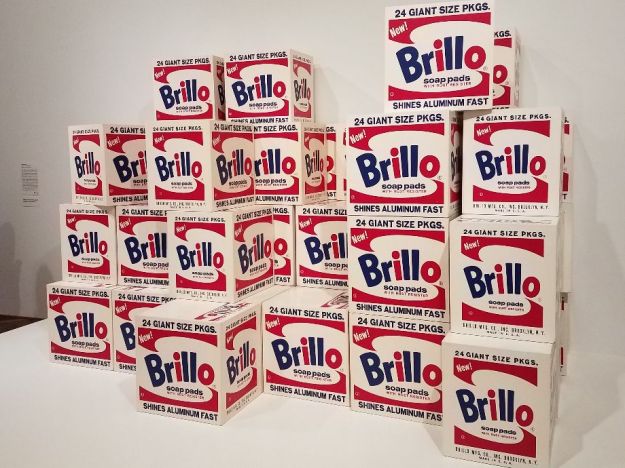
Stay with me, cigar lovers . . .
“He believed in the power of the banal. This faith was the wellspring of the Pop-art paintings—the Campbell’s soup cans, the Brillo cartons—that made him famous in the nineteen-sixties and changed America’s taste in art.”*
*********
Andy Warhol believed in the banal. For that, he became one of the most well-known pop artists in the history of art. He was an individual who emigrated from a small town which is now Slovakia. One of three children.
When he got hold of a Baby Brownie Special camera ($1.25), not only would he be changed forever, but the concept of art would make a seismic shift that has influenced every artist from the 40s until this very day.
Andy Warhol was that one in a million maybe even that one in a billion people who had the gift of seeing by observing and not holding back his feelings or his interests and sharing them with those around him – damn the public’s opinion.
No, he was not a saint, but he was as close to being himself as one can get. Why? Because he refused to see what everyone else had already seen. Was he criticized? Yes. Most geniuses are. And they take the admonishment in stride because they believe in themselves to the point of our astonishment.
A refreshingly new biography has recently been published, Blake Gopnik’s book (Warhol) is over 900 pages in length. There are over 7,000 footnotes the reader can access online. This is one of the most thorough and detailed biographies of Andy Warhol ever written.
And, for Warhol, it all started with simple observation with no regard for what everyone else was doing or seeing. He went his own way and that way was straight to the top. Some might say to the pinnacle of Kitsch. But what difference does that make? He didn’t care a whit about criticism.
Some cigar blenders are the same as Andy Warhol. They see far beyond the “what is” and can visualize the “what is” by being insouciant to the insidious drama of trying too hard to please everyone.
I can’t name all the cigars that have come and gone simply because they were considered “banal.” Banal meaning a lack of originality bordering on boredom. But they are (were) still solid contributions to the marketplace.
Why did some cigar makers vanish? Lack of conviction. A shakey belief in their own creation. Too eager to wait for acceptance. I can think of one manufacturer (Alberto J. Medina of PIO cigar.) who has believed in his cigar for 24 years. He has never wavered. He has what Andy Warhol had – conviction (and a superb blend). He was once quoted as saying, “My commitment to all of my patrons at a national level is to maintain the exquisiteness and value of each and every cigar.” He has done that.
There is a critical component this manufacturer has yet to capitalize upon, however – Marketing. That’s where Warhol excelled. Despite the romance of art and cigars, both are still businesses and the value of marketing is worth all the diamonds mined in Russia, the world’s leading supplier of the precious gem. Capitalize on its banality or perceived predictability (not a criticism if the reader is paying attention) and success will follow – for some.
Warhol went on to what – methinks, all men and women seek – immortality. My lone manufacturer will, I believe, end up in the famed firmament of famous cigars because he has taken his cigar and exposed it to the public in such a way that eternal life will follow. He just needs a bit of a push. Languishing in the wreckage of an ersatz ego, such as Warhol’s, will get you nowhere. Read the book.
*(The New Yorker June 8 & 15, 2020. A quote from a review written by Joan Acocella about Blake Gopnick’s new book, Andy Warhol.)
https://www.youtube.com/watch?v=5LDHSBVZpzc Andy
https://www.youtube.com/watch?v=rQSPKDnvbrM Cigars




